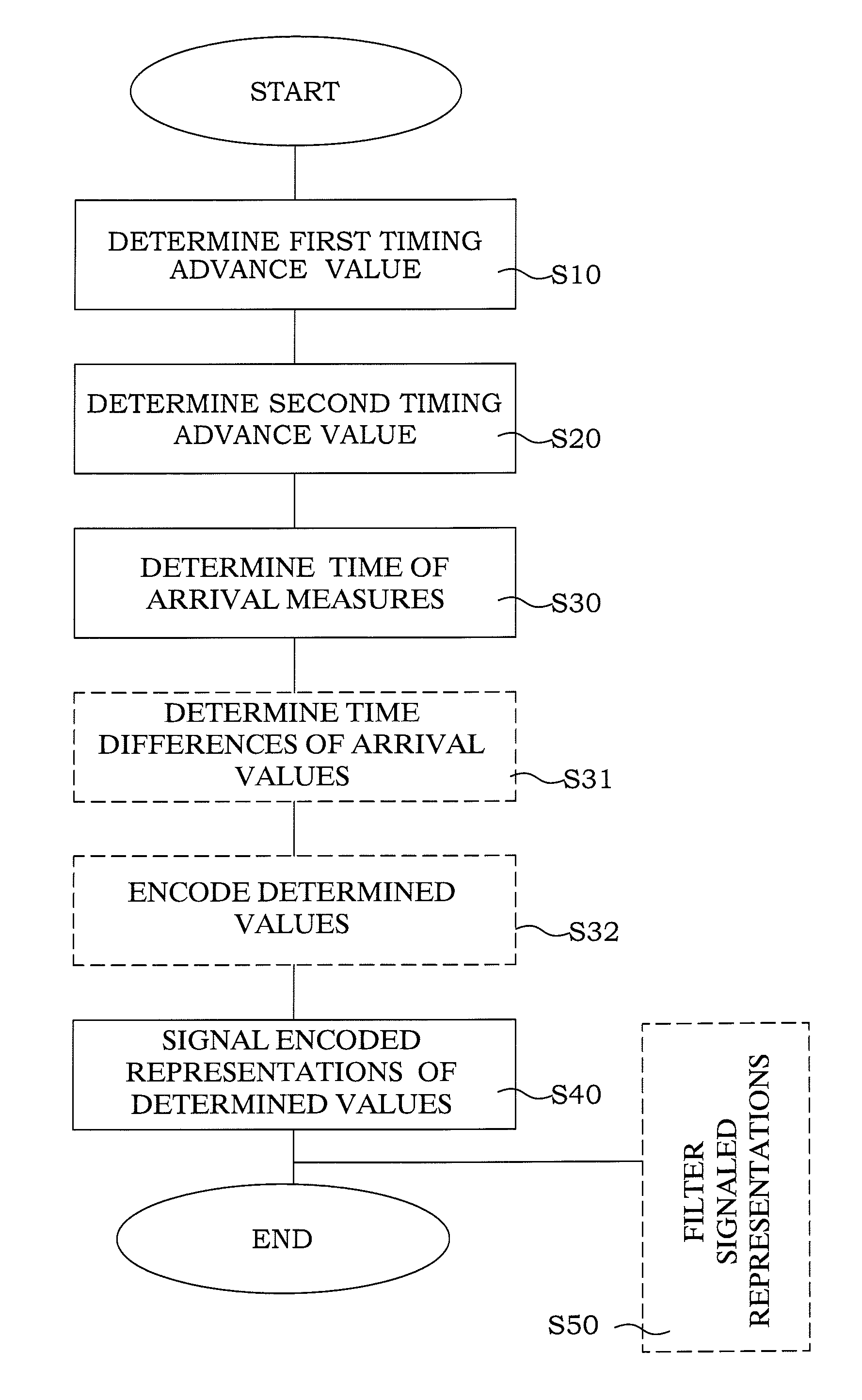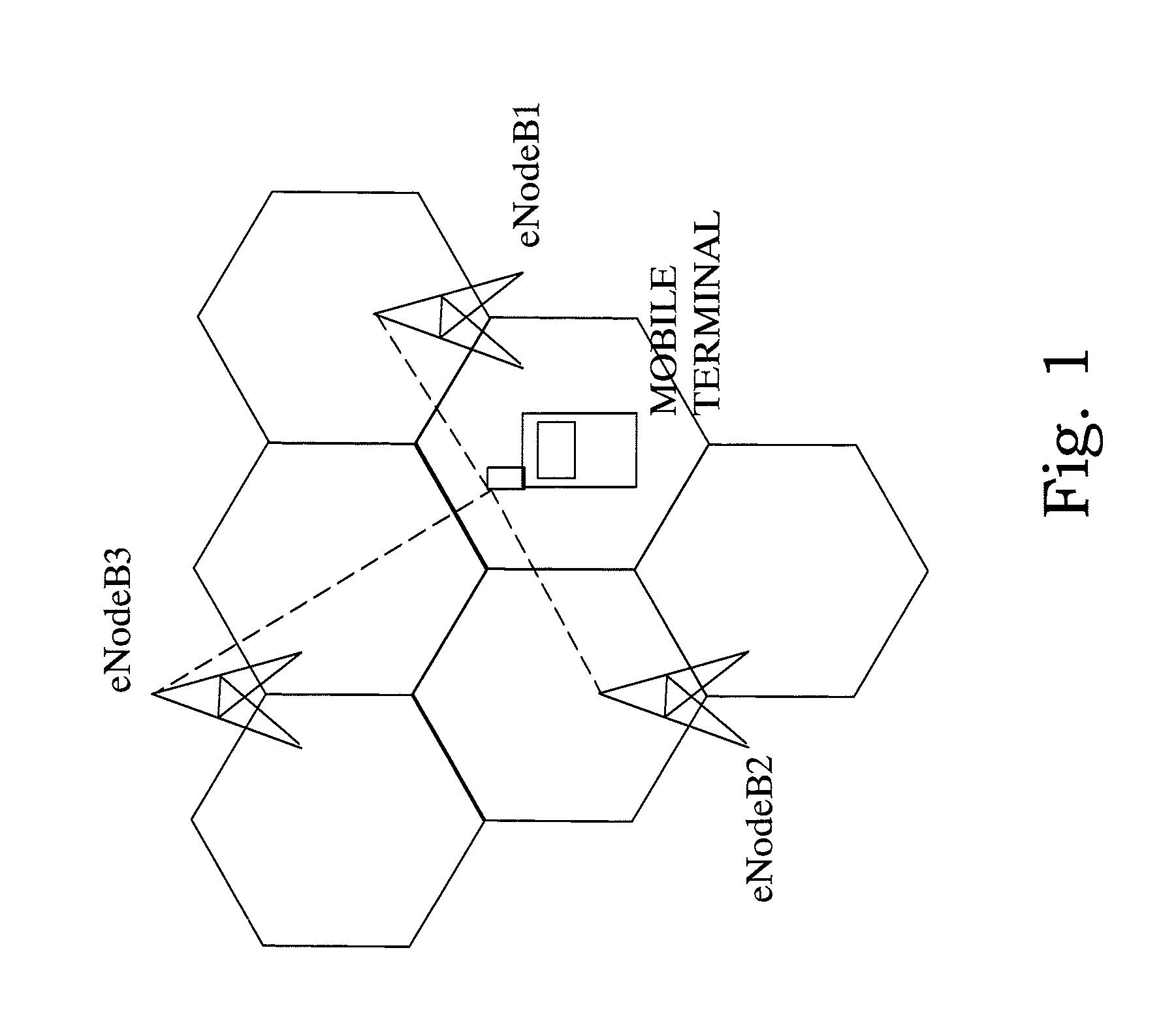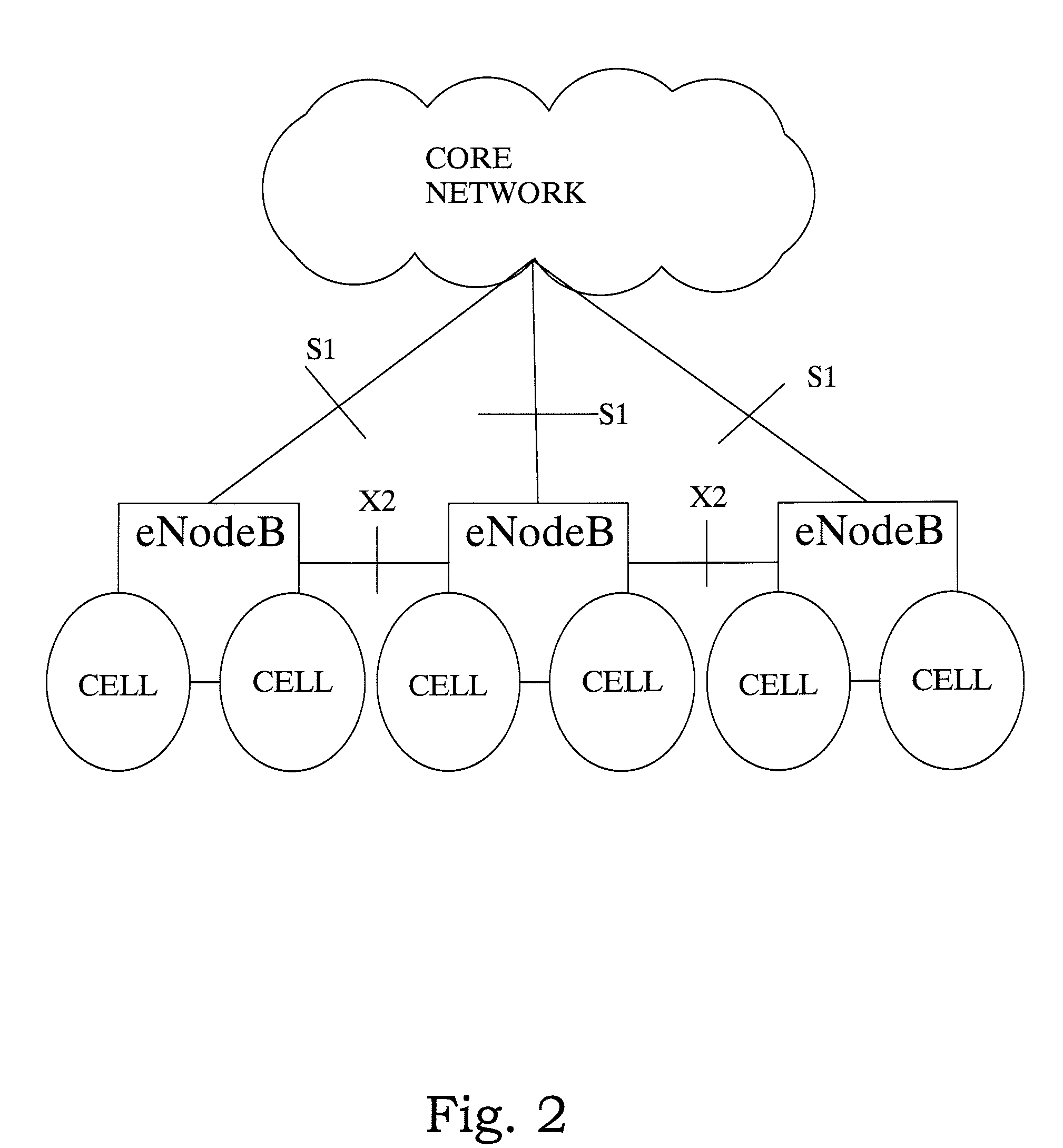Method and Arrangement for Real-Time Difference Determination for Mobile Terminal Processing
a mobile terminal and real-time difference technology, applied in the field of telecommunication systems, can solve the problems of cost, resource consumption, implementation and management of td methods, and achieve the effect of improving the positioning of mobile terminals
- Summary
- Abstract
- Description
- Claims
- Application Information
AI Technical Summary
Benefits of technology
Problems solved by technology
Method used
Image
Examples
first embodiment
[0070]According to the present invention, a time of arrival (TOA) measurement is performed in association with the first and second TA measurements above. This measurement is according to Equation 12
tTOA:|ttTOA−tHandover|<TLimit (12).
[0071]After measurement it is similarly encoded to give tTOA,Encoded. The encoded TOA measure is then signalled from the mobile terminal to the eNodeB over the RRC (LTE) interface, optionally together with the ID of the eNodeB (to provide a general signalling principle, allowing also for signalling of multiple measurements). i.e. as Equation 13
tTOA,Encoded, IDeNodeB (13).
[0072]The information element received in the eNodeB may also be further signaled over the X2 interface to another eNodeB or to a position calculation node outside the LTE RAN.
Multiple TOA Measurements and Signalling
second embodiment
[0073]In a second embodiment, time of arrival (TOA) measurement with regard to several eNodeBs are performed in association with the TA measurements above. These measurements are according to Equation 14
tTOA,i:|ttTOA,i−tHandover<TLimit, i=1, . . . , NTOA, (14)
where NTOA denotes the number of TOA measurements that are performed. After measurement the measurements are preferably encoded to give tTOA,i,Encoded, i=1, . . . , NTOA. The encoded measurements are subsequently signaled from the mobile terminal to the serving eNodeB over the RRC (LTE) interface, together with the IDs of the respective eNodeBs, i.e. as Equation 15
tTOA,i,Encoded, IDi,eNodeB, i=1, . . . , NTOA (15).
[0074]The signalling could be performed either by repetition of the signalling of a single TOA, or in some list, defining a joint information element. The information element received in the eNodeB may also be further signalled over the X2 interface to another eNodeB or to a position calculation node outside th...
third embodiment
[0075]In a third embodiment, time of arrival measurement with regard to several eNodeBs are performed in association with the TA measurements above. These measurement are
tTOA,i:|ttTOA,i−tHandover|<TLimit, i=1, . . . , NTOA, (16)
where NTOA denotes the number of TOA measurements that are performed. After measurement, the TOA measurements are processed to obtain TDOA (pseudo) measurements, with respect to one selected eNodeB. This gives the TDOAs
tTDOA,j=tTOA,j−tTOA,J, j=1, . . . , NTOA, j≠J. (17)
[0076]The TDOAs are then encoded to givetTDOA,j,Encoded, j=1, . . . , NTOA, j≠J. They are then signalled from the terminal to the eNodeB over the RRC (LTE) interface, together with the IDs of the eNodeBs, i.e. as
IDJ,eNodeB; tTDOA,j,Encoded, IDj,eNodeB, j=1, . . . , NTOA, j≠J. (18)
[0077]The information element received in the eNodeB may also be further signalled over the X2 interface to another eNodeB or to a position calculation node outside the LTE RAN.
Filtering of Time of Transmissio...
PUM
 Login to View More
Login to View More Abstract
Description
Claims
Application Information
 Login to View More
Login to View More - R&D
- Intellectual Property
- Life Sciences
- Materials
- Tech Scout
- Unparalleled Data Quality
- Higher Quality Content
- 60% Fewer Hallucinations
Browse by: Latest US Patents, China's latest patents, Technical Efficacy Thesaurus, Application Domain, Technology Topic, Popular Technical Reports.
© 2025 PatSnap. All rights reserved.Legal|Privacy policy|Modern Slavery Act Transparency Statement|Sitemap|About US| Contact US: help@patsnap.com



